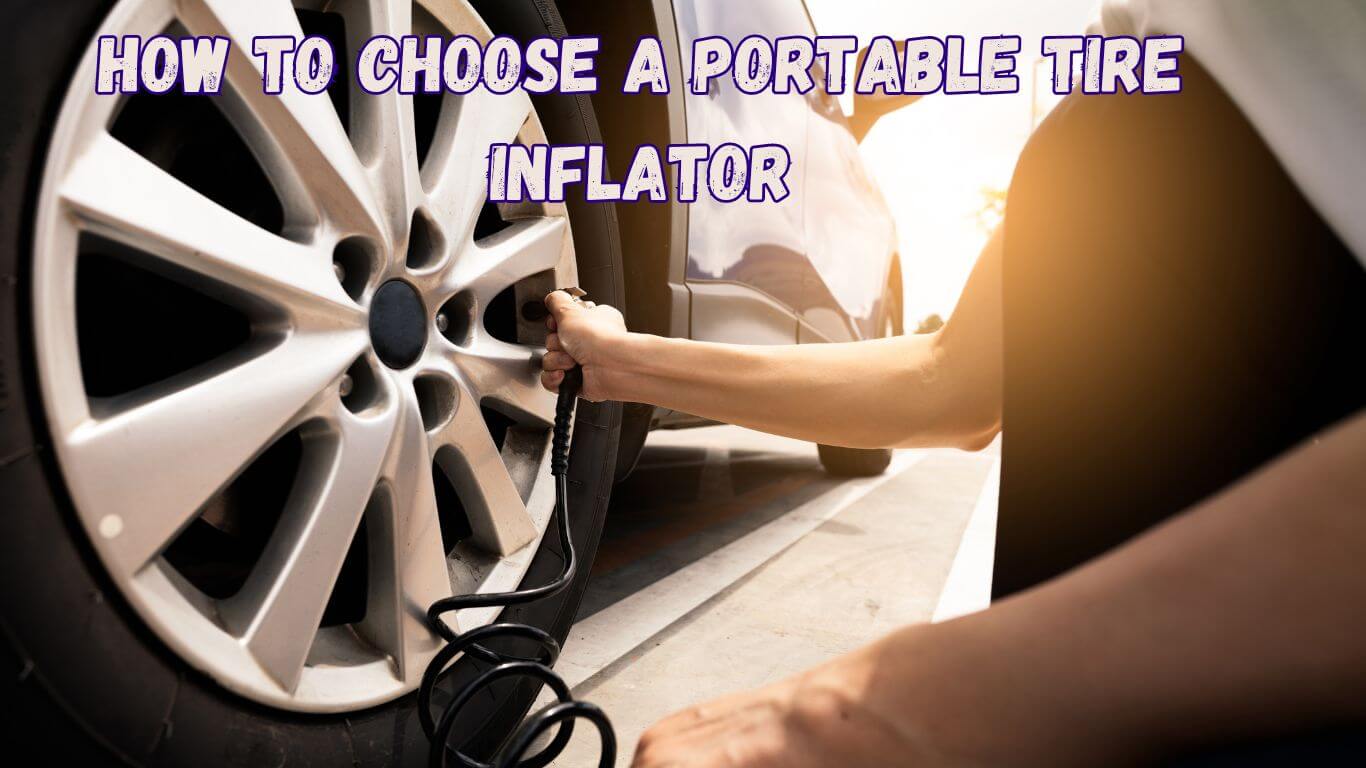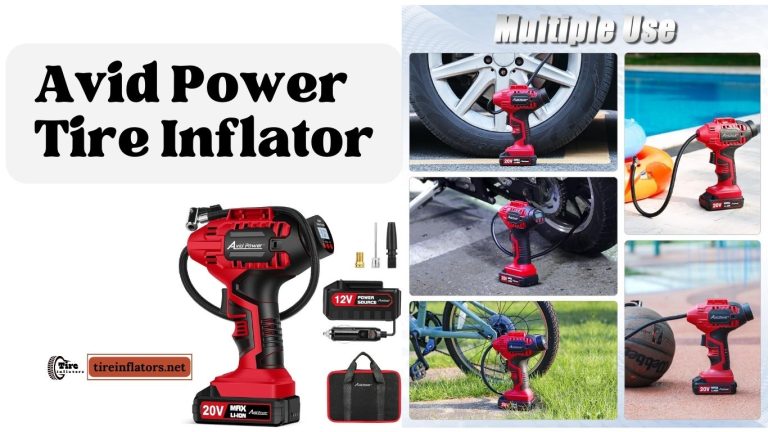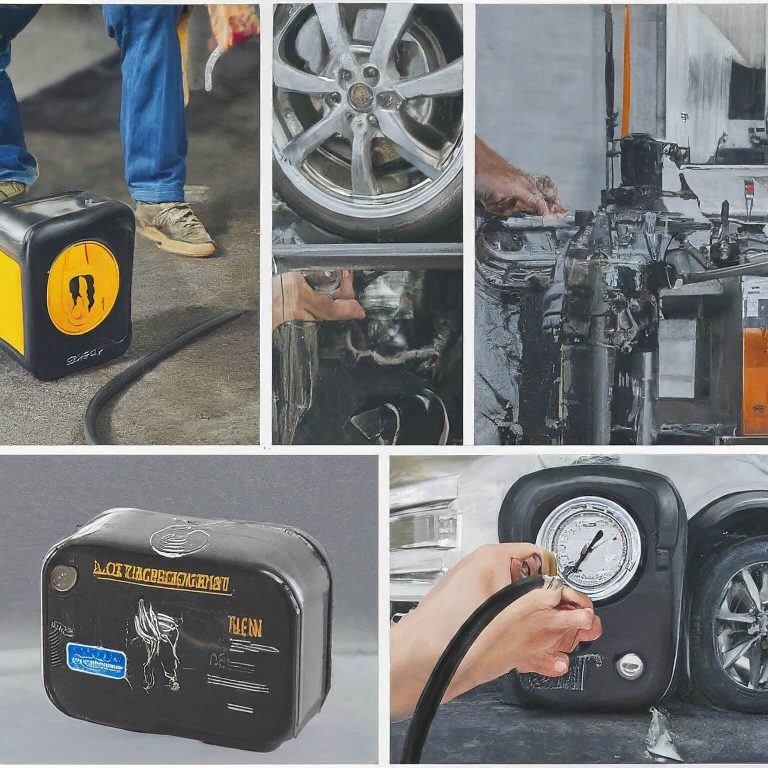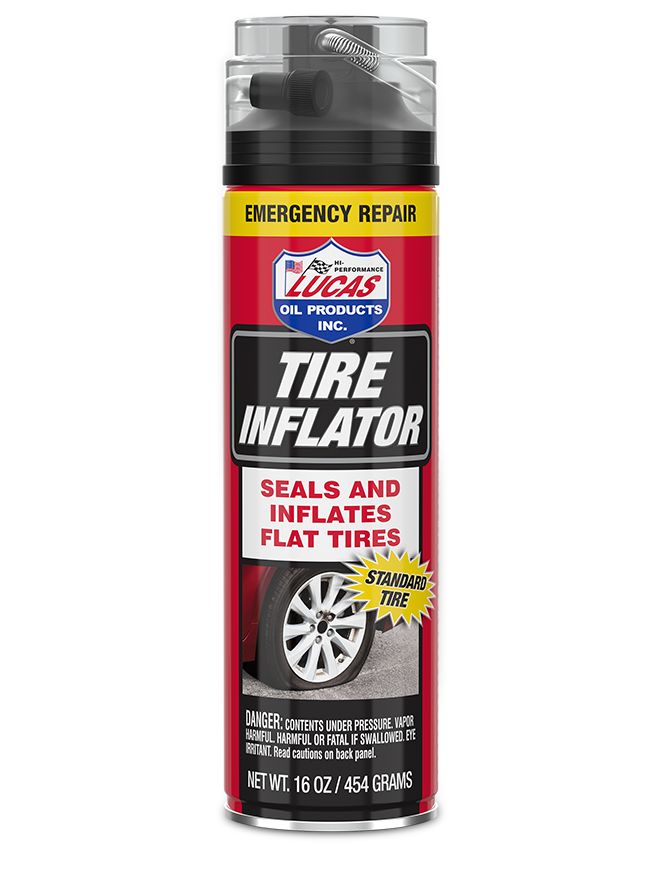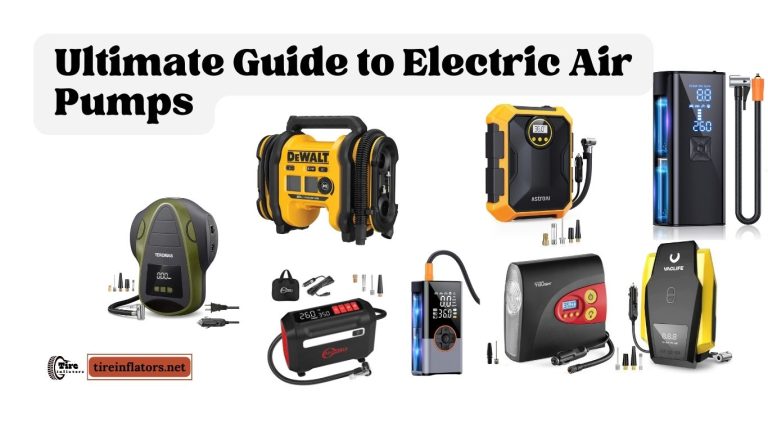How to Choose the Perfect Portable Tire Inflator: A Comprehensive Guide
Selecting the right portable tire inflator is essential for any vehicle owner. Whether you’re preparing for a long road trip or simply looking to maintain your vehicle’s tire pressure for optimal performance and safety, a portable tire inflator can be a lifesaver. With the vast array of options available on the market, it can be challenging to determine which inflator best suits your needs. This guide will walk you through the key factors to consider when choosing a portable tire inflator, ensuring you make an informed decision.
Understand Your Needs
First and foremost, assess your specific needs. Consider the types of vehicles you own (cars, motorcycles, bicycles), the desired inflation pressure range, and how frequently you anticipate using the inflator. If you own a larger vehicle, such as an SUV or a truck, you’ll need an inflator capable of delivering higher PSI levels.
Inflation Speed
One of the most critical factors to consider is the inflation speed. Look for an inflator that can quickly and efficiently inflate your tires to the desired pressure. Some models are designed to fill tires up to three times faster than their competitors, saving you valuable time during emergencies or routine maintenance.
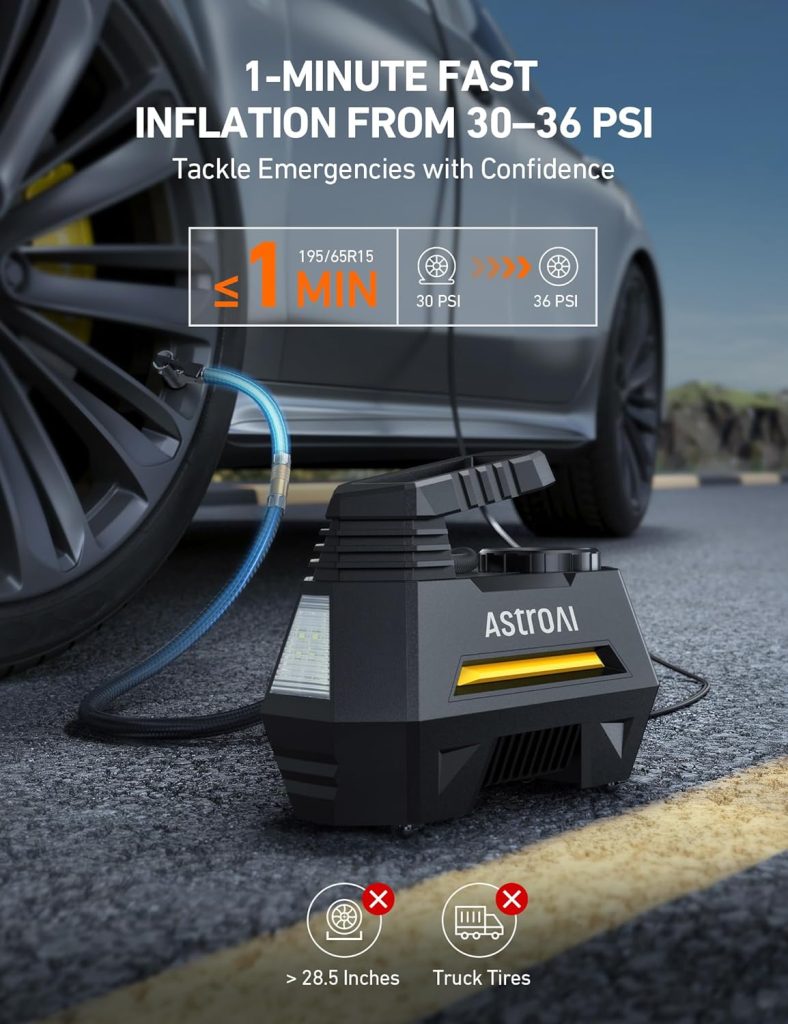
Power Source and Portability
Portable tire inflators come in various power source options, including battery-powered, 12-volt car adapters, and direct-to-battery models. Battery-powered and 12-volt car adapter models offer the convenience of portability, allowing you to inflate your tires anywhere. However, for more power, consider an inflator that connects directly to the car battery. Additionally, assess the inflator’s size and weight to ensure it’s easy to carry and store in your vehicle.
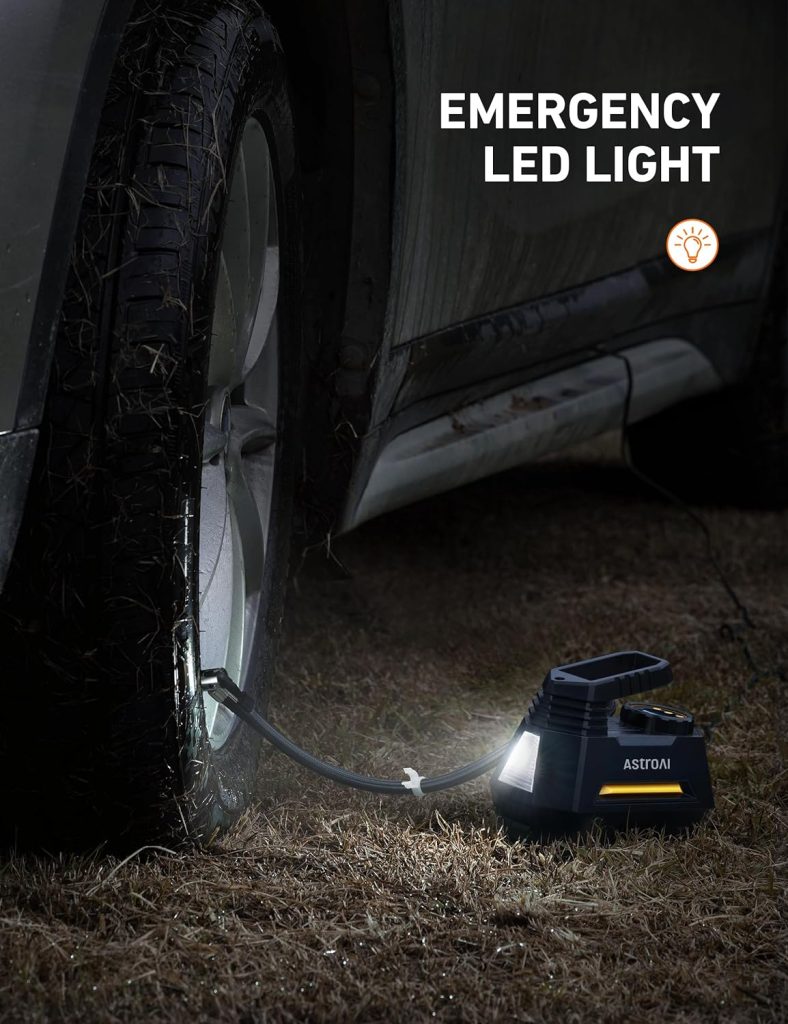
Digital Display and Automatic Shut-Off
A digital display is invaluable for setting precise inflation levels and monitoring the process. Opt for an inflator with a large, easy-to-read LED display that shows the pressure level, unit, mode, and battery level. Moreover, an automatic shut-off feature is crucial for preventing over-inflation by stopping the inflator once the preset pressure is reached.
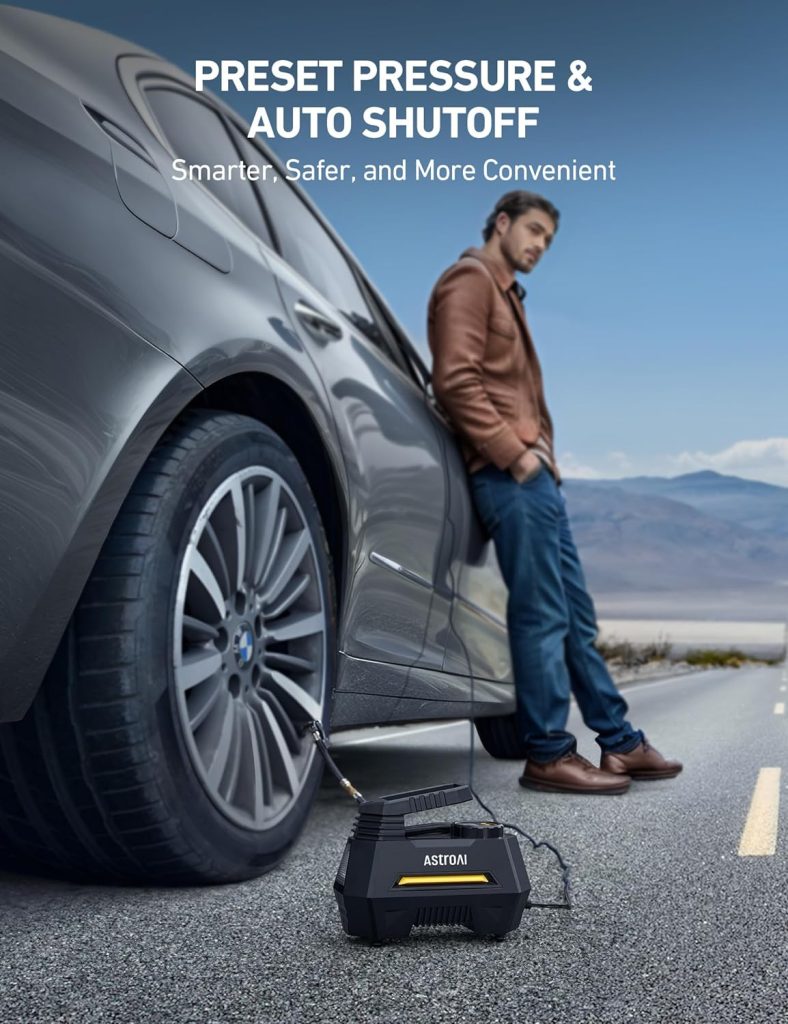
Additional Features
Consider inflators with extra features that enhance convenience and usability. Look for models with built-in LED lights for nighttime use, multiple nozzle attachments for inflating various items, and a memory function that recalls your last used settings. Some inflators also offer rapid inflation times and long operation times, which are beneficial for frequent use.
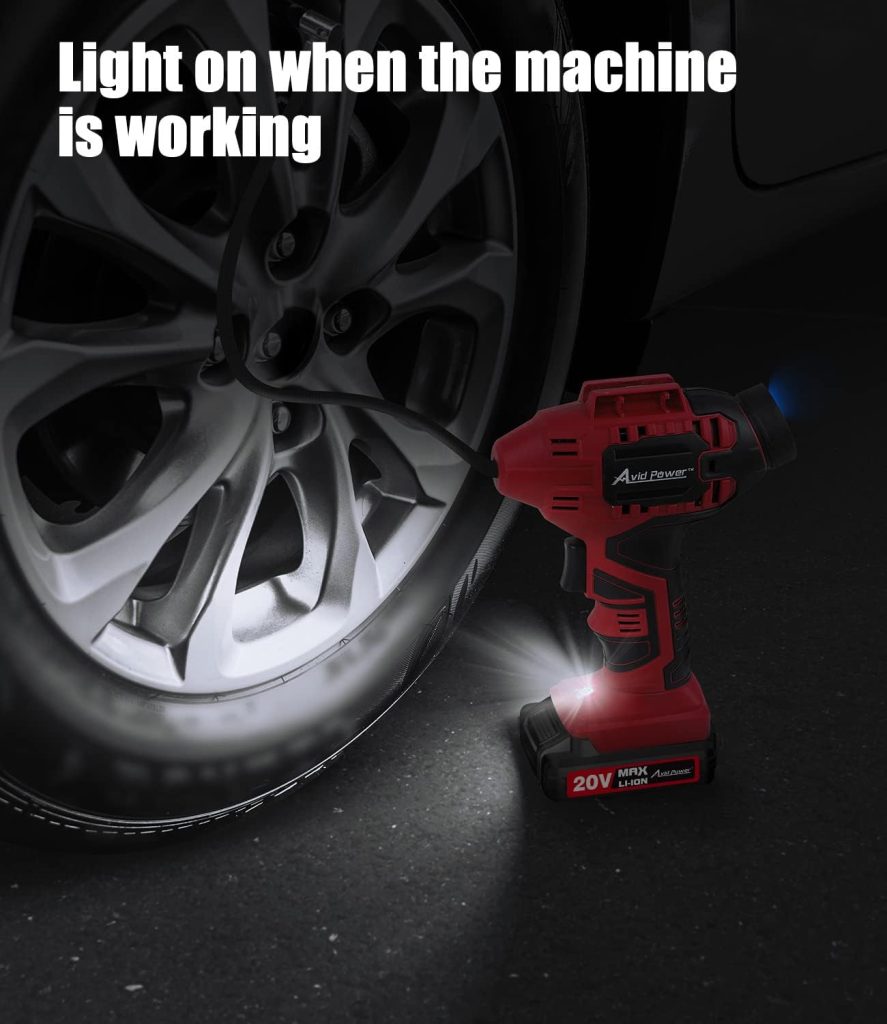
Durability and Quality
Investing in a high-quality, durable tire inflator ensures long-term reliability. Check user reviews and product descriptions for information on the materials and manufacturing quality. A well-built inflator can withstand regular use and the rigors of being stored in a vehicle.
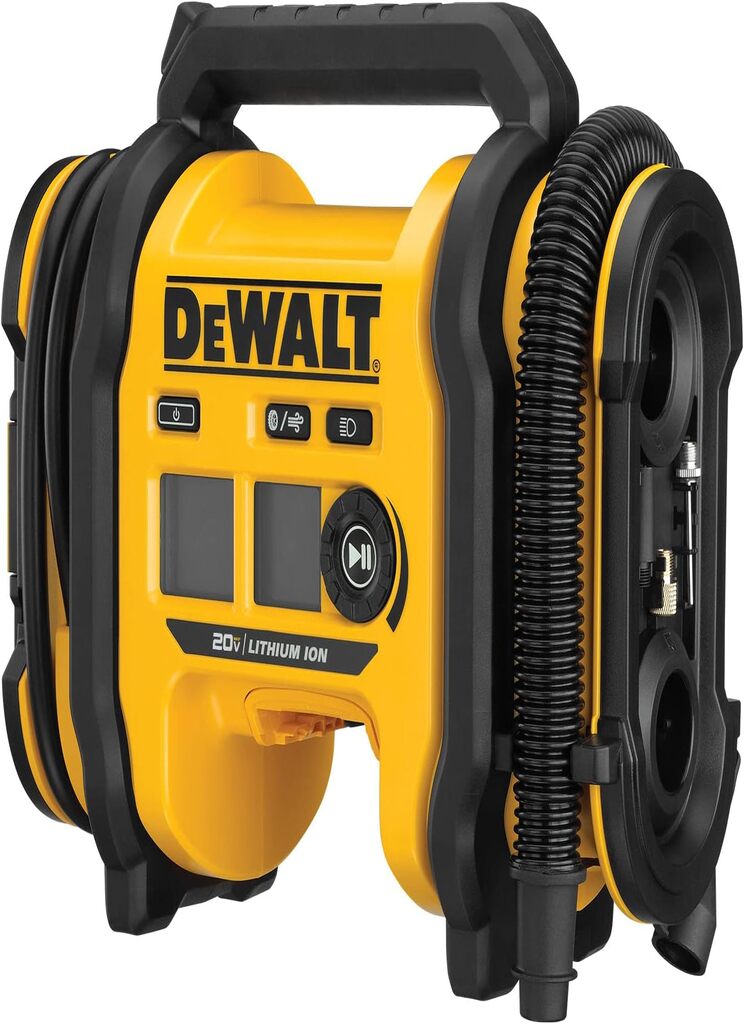
Price and Value for Money
While price is an important consideration, it’s essential to balance cost with the overall value and quality of the inflator. Compare prices of different brands and models, but also evaluate the features, durability, and performance to ensure you’re getting the best value for your money.
10 FAQs: How to Choose a Portable Tire Inflator
- Corded vs. Cordless: Which power source is right for me?
- Corded: Offers unlimited runtime, ideal for inflating multiple tires or if power is your priority. However, it limits your reach and requires proximity to your vehicle.
- Cordless: Provides portability and freedom of movement. Battery life is finite, so consider the Ah (Ampere-hour) rating for runtime between charges.
- How much pressure (PSI) should my portable inflator handle?
Ensure the inflator’s maximum pressure (PSI) is equal to or higher than the recommended PSI for your vehicle’s tires. Most car tires require 32-35 PSI, but SUVs and trucks might need more.
- Do I need a super-fast inflation speed?
Higher CFM (cubic feet per minute) translates to faster inflation, but it often comes at the expense of size and price. Consider how often you’ll use the inflator and how quickly you need to inflate a tire.
- Is a digital gauge important?
Absolutely! A digital gauge provides a clear and accurate reading of your tire pressure, making inflation easier and preventing overinflation.
- What are some helpful features to look for?
- Auto shutoff: Stops inflation automatically when the desired pressure is reached.
- Easy-to-use control panel: Simplifies operation, especially in an emergency.
- LED light: Provides illumination for nighttime use.
- Carrying case: Offers convenient storage and portability.
- Is portability a big factor?
If you prioritize storing the inflator in your trunk or car compartment, choose a compact and lightweight model.
- Do I need additional accessories?
Many inflators come with accessories like a Presta valve chuck (for bicycles) and a ball inflation needle (for sports balls). Consider if you’ll need to inflate anything besides car tires.
- How much should I expect to spend?
Prices range based on features, power source, and brand. Expect to pay $30-$50 for a basic corded inflator, $50-$70 for a versatile cordless option, and $100+ for a premium high-performance inflator.
- What are some reputable brands to consider?
Research specific models based on your needs, but some trusted brands include RIGID, AirMoto, DEWALT, and brands known for quality tools.
- Where can I buy a portable tire inflator?
You can find them online at retailers like Amazon, at auto parts stores like AutoZone, or in department and hardware stores with automotive sections.
Conclusion
Choosing the right portable tire inflator involves considering your specific needs, the inflator’s features, and its performance capabilities. By taking into account factors such as inflation speed, power source, digital display, additional features, durability, and price, you can select an inflator that provides convenience, efficiency, and peace of mind. Remember, maintaining proper tire pressure is not just about performance; it’s also about safety on the road.

